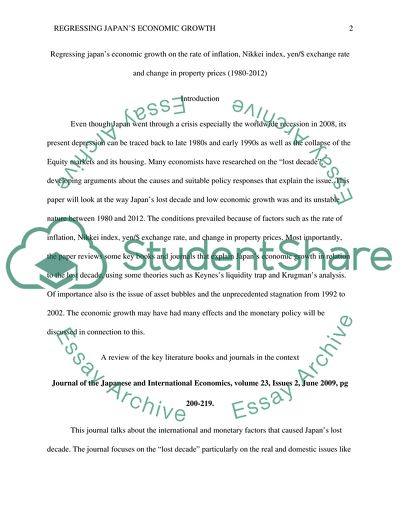Cite this document
(Regressing japans economic growth on the rate of inflation, Nikkei Literature review, n.d.)
Regressing japans economic growth on the rate of inflation, Nikkei Literature review. https://studentshare.org/macro-microeconomics/1804862-regressing-japans-economic-growth-on-the-rate-of-inflation-nikkei-index-yen-exchange-rate-and-change-in-property-prices-1980-2012
Regressing japans economic growth on the rate of inflation, Nikkei Literature review. https://studentshare.org/macro-microeconomics/1804862-regressing-japans-economic-growth-on-the-rate-of-inflation-nikkei-index-yen-exchange-rate-and-change-in-property-prices-1980-2012
(Regressing Japans Economic Growth on the Rate of Inflation, Nikkei Literature Review)
Regressing Japans Economic Growth on the Rate of Inflation, Nikkei Literature Review. https://studentshare.org/macro-microeconomics/1804862-regressing-japans-economic-growth-on-the-rate-of-inflation-nikkei-index-yen-exchange-rate-and-change-in-property-prices-1980-2012.
Regressing Japans Economic Growth on the Rate of Inflation, Nikkei Literature Review. https://studentshare.org/macro-microeconomics/1804862-regressing-japans-economic-growth-on-the-rate-of-inflation-nikkei-index-yen-exchange-rate-and-change-in-property-prices-1980-2012.
“Regressing Japans Economic Growth on the Rate of Inflation, Nikkei Literature Review”. https://studentshare.org/macro-microeconomics/1804862-regressing-japans-economic-growth-on-the-rate-of-inflation-nikkei-index-yen-exchange-rate-and-change-in-property-prices-1980-2012.


